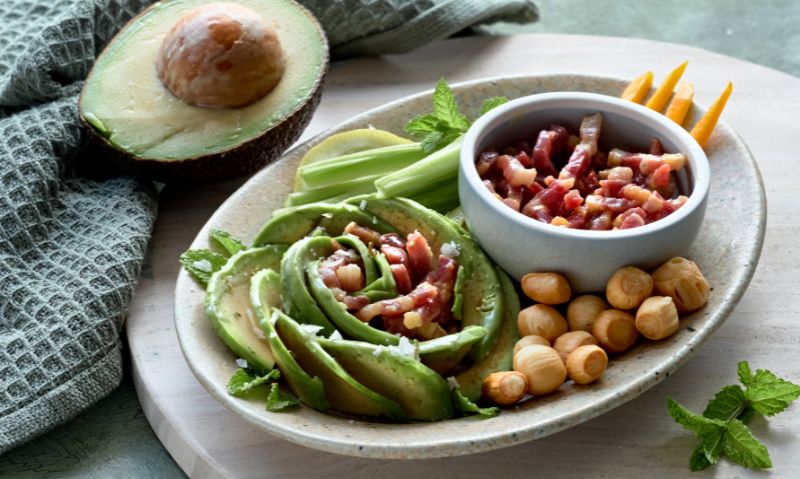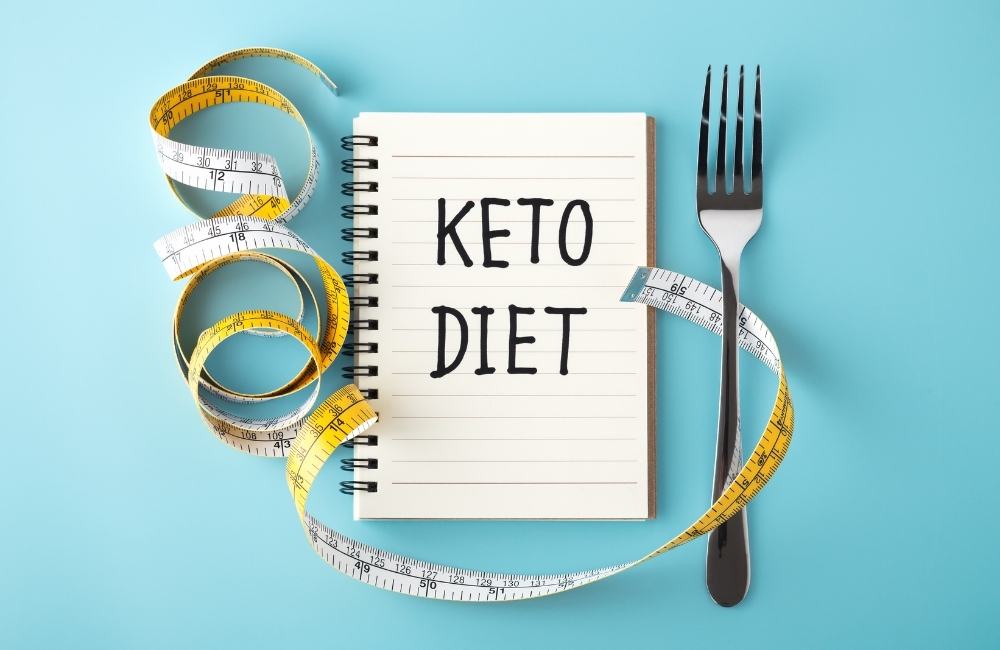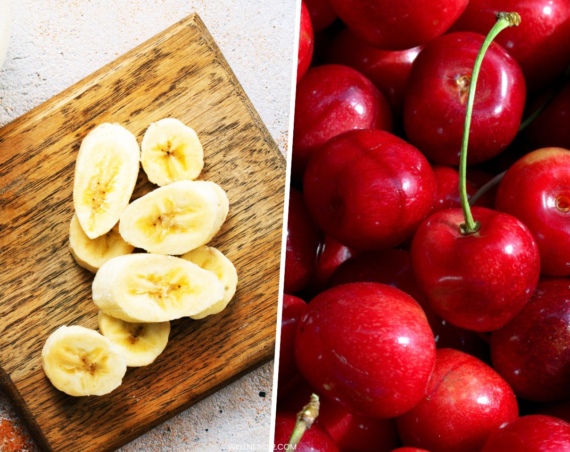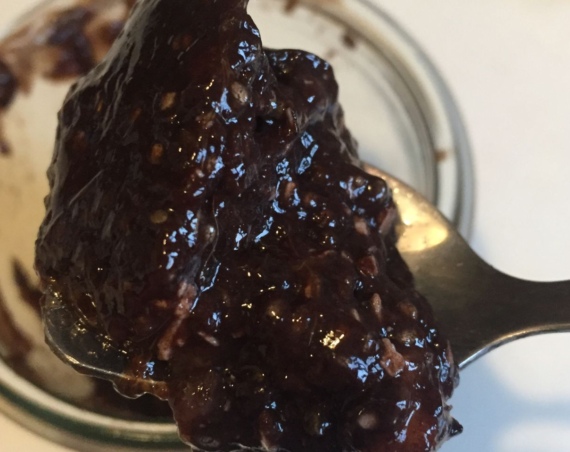
Have you heard of the ketogenic diet and want to get started but you’re just not sure how to? Well, look no further!
Here we will explain the 7 most important rules to follow when starting the keto diet and some of the major health benefits of following the keto diet.
So What Is the Keto Diet?
The ketogenic diet (“keto” for short) is a diet that is very high in fat, low in carbohydrates, and moderate in protein.
The keto diet is beneficial for a wide variety of people, including those with neurological conditions (such as seizures), certain cancers, type 2 diabetes, and even those individuals who are interested in weight loss(1).
If you’ve struggled to lose weight and are frustrated with diets that have failed you in the past, the keto diet may be the right choice for you!
The keto diet is based on the concept of using fat for energy instead of the normal physiological process of using glucose (or sugar) for energy.
The byproduct of using fat for energy is ketone bodies (or ketones for short) which is an alternative fuel source for the brain.
When you maintain a constant state of utilizing fat for energy, this is referred to as nutritional ketosis.
7 Basic Keto Rules to Speed Up Weight Loss

1. Limit Carbs to 50 Grams per Day
The key to following a keto diet is to eat 50 grams of carbs per day or less.
This means that your main source of carbohydrate intake will be coming from fresh fruits and vegetables (and not grains, breads, sweets, etc.).
The next question is how many carbohydrates are in the fruits and vegetables we like to eat?
For instance, 1 cup of berries has 15g of carbohydrates and 1 cup of raw veggies (such as carrots, cucumbers, lettuce, bell peppers, Brussel sprouts, and leafy greens, ) has 5g of carbohydrates.
You may have heard of net carbs. What does that mean?
Net carbs are the carbs that actually raise blood sugar.
They are calculated by subtracting the grams of fiber from the total grams of carbohydrates in food.
This is because the fiber (which is technically a carb) is not digestible by the human body and therefore does not contribute to increased blood sugar and the resulting insulin secretion.
Net Carbs = Total carbs (grams) – fiber (grams) – sugar alcohols (grams)
Remember, limit your total grams of NET CARBs to 50g per day or less for optimal ketosis and the associated health benefits (including weight loss).
What Are Sugar Alcohols?
Sugar alcohols are molecules that add a sweet taste to foods without adding the sugar molecule that our body uses for energy.
Sugar alcohols are either partially digested or indigestible by the body and therefore they can usually be subtracted from the total number of carbohydrates to get the net carbs.
However, there are a few sugar alcohols that do raise blood sugar and need to be counted in the total carbs.
The sugar alcohols that can be subtracted from total carbs include:
- Erythritol
- Xylitol
- Mannitol
- Lactitol
The sugar alcohols that cannot be subtracted from total carbs include:
- Maltitol
- Sorbitol
- Isomalt
- Glycerin
2. Eat Plenty of Healthy Fats
The body uses fat for energy instead of glucose for energy while following the keto diet.
Since the keto diet calls for such a high intake of fat, it is important to get the majority of your fat from healthy fats, such as monounsaturated and polyunsaturated fats.
These are the fats that promote overall heart health by lowering your risk of heart disease and stroke.
You want to limit your intake of saturated and trans fats, as these increase your risk of heart disease and other associated illnesses.
Increase your intake of monounsaturated and polyunsaturated fats from the foods listed below:
Monounsaturated fats (2):
- Olive oil
- Avocado oil
- Peanut oil
- Sesame oil
- Safflower oil
- Avocados
- Peanut butter
- Many nuts and seeds
Polyunsaturated fats (3):
- Soybean oil
- Corn oil
- Sunflower oil
- Tofu
- Soybeans
- Walnuts
- Sunflower seeds
Saturated fats (4):
- coconut oil/ coconut butter
- palm oil
- palm kernel oil
- butter
- cheese
- animal fat
- lard and cream (such as cream cheese)
- beef
3. Focus on Non-Starchy Veggies
Find a wide variety of non-starchy vegetables to add to your diet. These are the starchy vegetables to stay away from:
- Potatoes
- Winter squash (butternut, acorn, spaghetti, pumpkin)
- Corn
- Peas
- Beans
The rest of the vegetables not listed above would be classified as non-starchy veggies.
This means they do not contribute many carbs to your total daily carb intake.
These veggies include foods such as:
- cucumbers
- carrots
- lettuce
- asparagus
- Brussel sprouts
- broccoli
- cauliflower
- celery
- eggplant
- green beans
- jicama
- mushrooms
- onions
- okra
- radishes
- peppers
- zucchini
- snap peas.
All of these foods can be consumed without contributing to a significant rise in blood glucose.
Additionally, these non-starchy vegetables are a great source of fiber and will help keep your GI system moving!
4. Eat Protein in Moderation
Protein is a major component of a balanced diet.
But it is important to consume a moderate amount of protein on a keto diet because protein can be converted to glucose if consumed in excess of what the body needs.
The average person should consume the recommended intake of 0.8g/(kg body weight) of protein per day.
This will help ensure you are getting adequate protein to continue the essential functions of the body and to also make sure protein is not being consumed in excess and therefore being converted to glucose for energy.
5. Try Intermittent Fasting With Keto
Fasting can aid in the maintenance of a state of ketosis because fasting utilizes the body’s stores of energy.
Intermittent fasting is a set period of time (i.e. >8 hours) in which you deprive the body of food in order to force the body to utilize the fat stores for energy.
Typical schedules of daily intermittent fasting include windows of time such as 8-10 hours of eating, with the rest of the hours of the day being fasted.
Intermittent fasting has been indicated to weight loss, improved brain function, and increased energy.
Water can be consumed while fasting and is actually encouraged during a fast, but all other food and drinks need to be limited to hours of non-fasting, as outlined by your daily fasting window.
6. Plan Your Meals Ahead
Plan, Plan, Plan! I can’t stress this enough when following the keto diet.
Have you ever gotten to the point where you feel that you would eat almost anything because you were so hungry?
This is exactly what we want to try to avoid, especially while following the keto diet.
This is because it is so easy to take your body out of ketosis with just a quick “snack” that you so desperately are craving.
Planning ahead for all of your meals and snacks is crucial to being able to maintain a state of ketosis and utilize fat for energy.
Working together with family members or friends following the diet can be helpful to create a keto meal plan that will help you achieve your weight loss goals.
7. Know-How to Get Over ‘Keto Flu
The ‘keto flu is a cluster of symptoms that occur within the first few weeks of starting the keto diet.
The symptoms most commonly associated with the ‘keto flu include headache, fatigue, nausea, dizziness, gastrointestinal discomfort, and brain fog (5).
These symptoms generally last anywhere from 1-4 weeks in duration.
So How Do You Get Over the ‘Keto Flu?’
The main factor in helping to get over the ‘keto flu is to stay hydrated and replenish your body with adequate electrolytes.
In addition, supplementation with medium-chain triglycerides (MCT) oil has been shown to improve adaptation to ketosis for individuals starting the keto diet (5).
There are no studies directly examining the benefits of a vegan keto diet.
However, a study from 2014 explored the effects of an Eco-Atkins and low-carb vegan diet.
Eco-Atkins is similar to keto vegan in a way that they both restrict carbs and only eat plant-based. Both diets also induce ketosis.
In this study, they compared the effects of a low-carb vegan diet and that of a high-carb vegetarian diet.
Participants on a low-carbohydrate vegan, Eco-Atkins ate a diet based on 26% carbs, 31 % protein, and 43% fat.
All while, those on a high-carb vegetarian diet ate a diet that takes energy from 58% carbs, 16 % protein, and 25% fat.
The researchers of the study found that those on an Eco-Atkins reported benefits such as:
- Significant weight loss
- Reduction in total cholesterol
- A decrease in triglyceride level
- Lower density LDL cholesterol
- Improved risk factors for heart disease
Read more about the benefits of a low-carb vegan diet, Eco-Atkins.
One main benefit dieters often seek when going on a keto vegan diet appears to be rapid weight loss.
The Keto diet, in particular, is known to cause drastic and rapid weight loss and fat loss.
One study done on the effects of a keto diet had findings that back this benefit. In their study, obese participants saw a reduction in their weight and BMI following keto.
Furthermore, the diet led to a lower level of LDL and HDL cholesterol, and blood glucose.
To read more: the keto diet’s weight loss benefit backed by science.
A recent study on a plant-based diet also links weight loss and a vegan diet.
In a 2017 study, it was reported that those on a vegan diet tend to have lower BMI than those on a non-vegan diet.
Moreover, they indicated that those on a vegan diet lost 2.02 kg more than those on a non-vegetarian diet.
To sum up, studies done on similar subjects as the keto vegan diet suggest many of its benefits.
Weight loss, fat loss, lower BMI, and total cholesterol are some of the main benefits of a vegan keto diet.
What Is Not Allowed on Keto Diet?
The main thing to know when on a keto diet is to limit processed foods like granola bars, bread, pasta, rice, sweets, sauces, crackers, cookies, ice cream, sodas, etc.
This is a very low-carb diet and your body will not maintain ketosis with carbs from processed foods.
The Keto diet does not allow sugary beverages, as these instantly raise blood sugar and will take your body out of the ketosis that you worked so hard to achieve.
Alcohol (such as wine and beer) is not allowed on the keto diet because it contains carbs that also significantly raise blood sugar.
How Do I Start a Keto Diet?
The first tip to starting keto dieting is to get rid of all the processed food in your pantry/fridge. This will help to remove the temptation to “cheat.”
The next step is to plan your week’s meals and snacks ahead of time and make a grocery store run.
Find support in your family members or those who live with you to start this high-fat diet! Remember, make sure you get enough fat from the diet like
Is the Keto Diet Bad? or Is It Healthy?
The keto diet is a relatively new diet, with less evidence-based research to support its efficacy. However, this does not mean the keto diet is either “good” or “bad.”
Rather, we know that the keto diet can actually have beneficial lowering effects on total cholesterol, improving overall heart health(4).
Regardless of your reasons for starting the keto diet, you should always seek medical advice from a healthcare provider to assess your risks before starting this diet.
The Last Word
The keto diet is used for a variety of health conditions and can be successfully implemented to fit most everyone’s lifestyle.
Always check with your healthcare provider before starting a diet.
Once you have the “all clear” from your medical professionals, go ahead and find support in your friends and start enjoying the health benefits of the keto diet!
Remember, the most important first step to starting the keto diet is to rid your pantry of all those processed foods that are high in carbohydrates.
This will set you up for success with the keto diet and will help ensure you are not tempted to eat foods that do not fit this new diet.
Enjoy finding new foods that fit into the keto diet and are unique, as it’s so important to find foods that you enjoy on any diet!
- Westman, Eric C., et al. “A Review of Low-Carbohydrate Ketogenic Diets.” Current Atherosclerosis Reports, vol. 5, no. 6, 2003, pp. 476–483., doi:10.1007/s11883-003-0038-6.
- American Heart Association. “Monounsaturated Fat.” www.heart.org, 2015, www.heart.org/en/healthy-living/healthy-eating/eat-smart/fats/monounsaturated-fats.
- American Heart Association. “Polyunsaturated Fat.” Www.heart.org, 2015, www.heart.org/en/healthy-living/healthy-eating/eat-smart/fats/polyunsaturated-fats.
- American Heart Association. “Saturated Fat.” Www.heart.org, 2015, www.heart.org/en/healthy-living/healthy-eating/eat-smart/fats/saturated-fats.
- Bostock, Emmanuelle C. S., et al. “Consumer Reports of ‘Keto Flu’ Associated With the Ketogenic Diet.” Frontiers in Nutrition, vol. 7, 2020, doi:10.3389/fnut.2020.00020.


